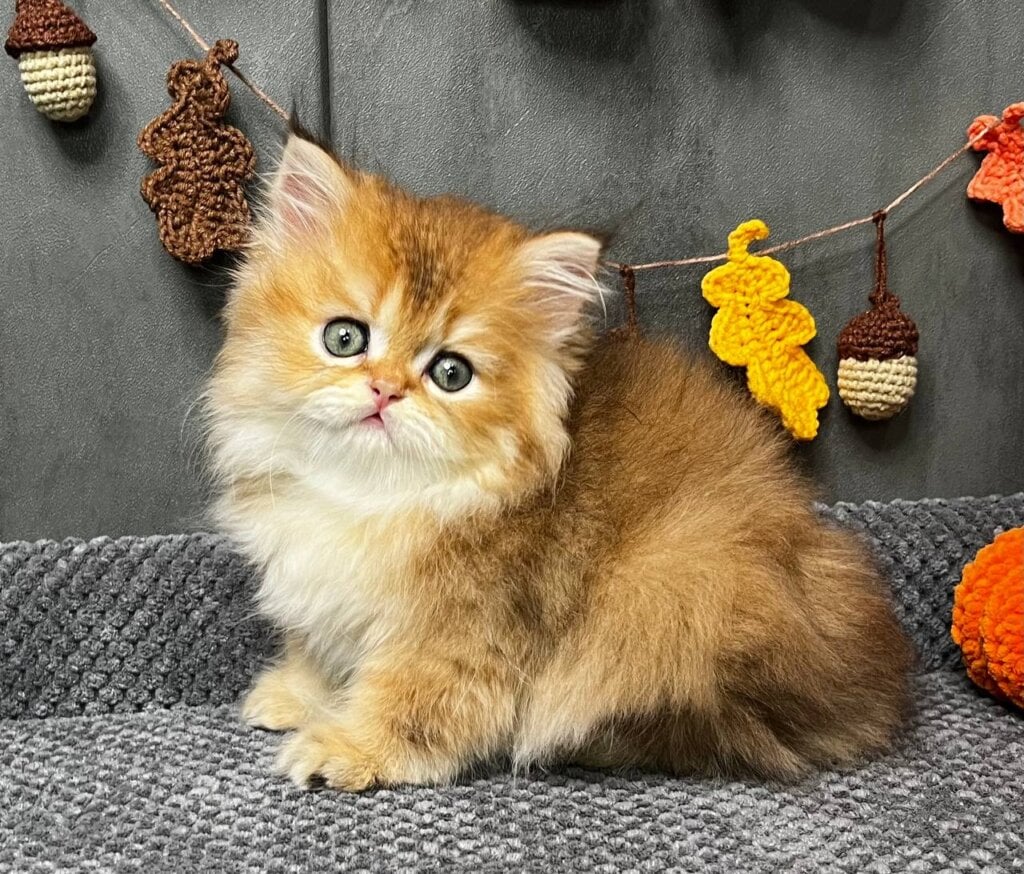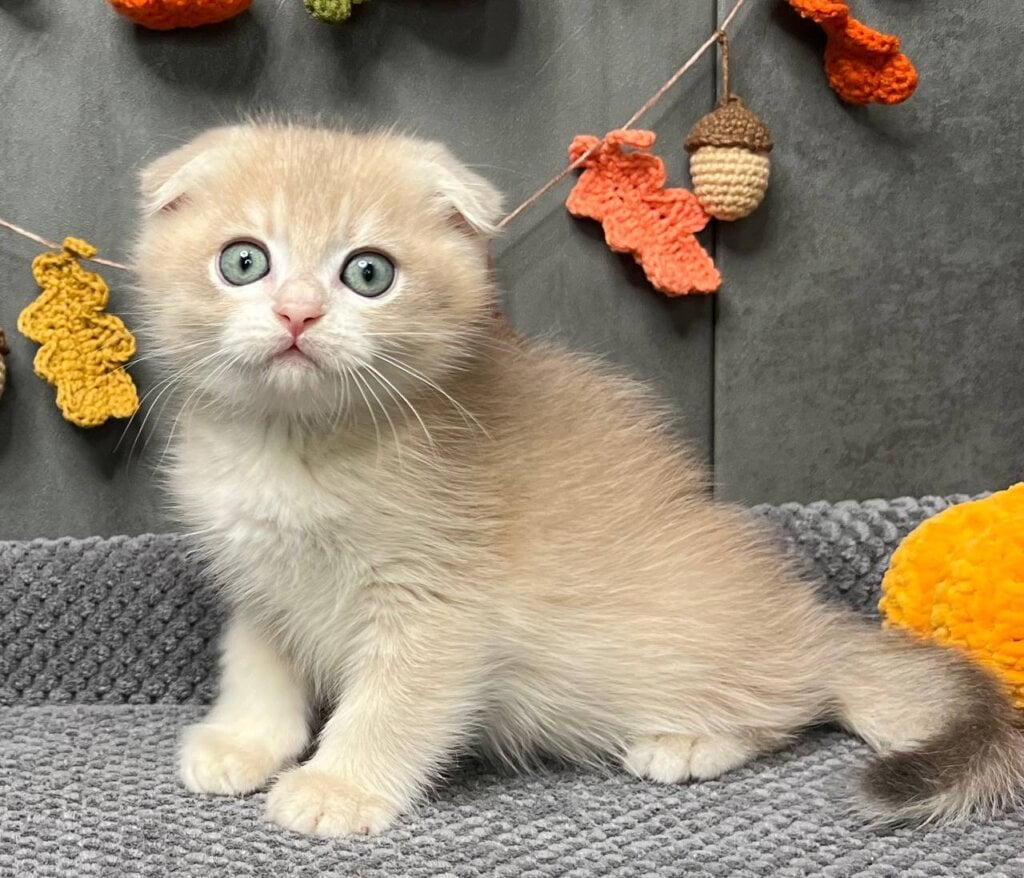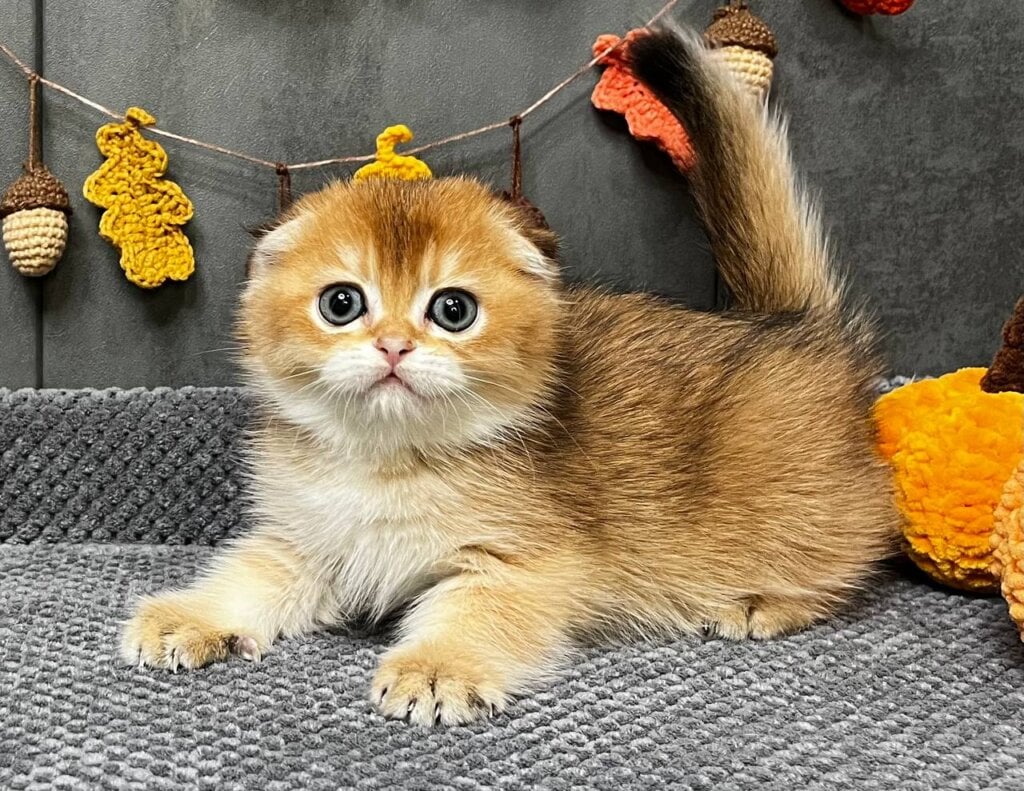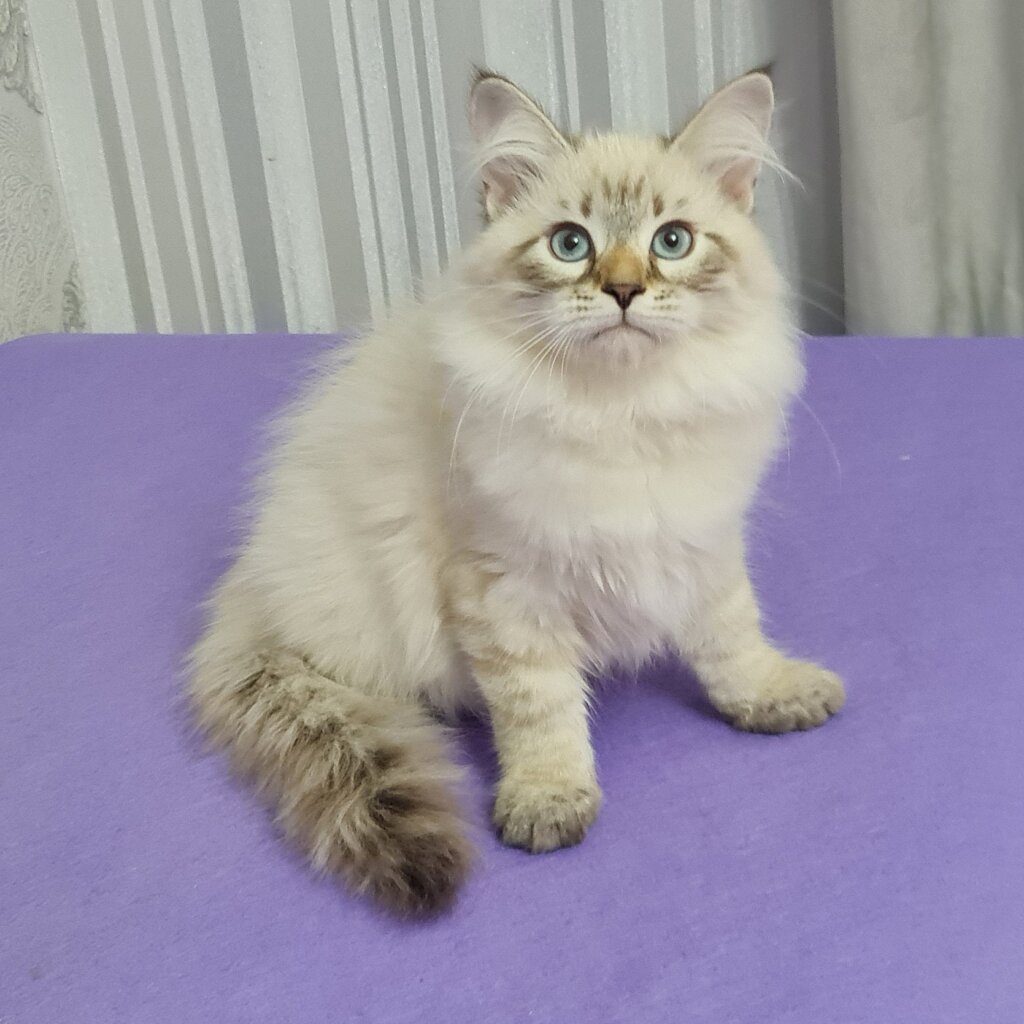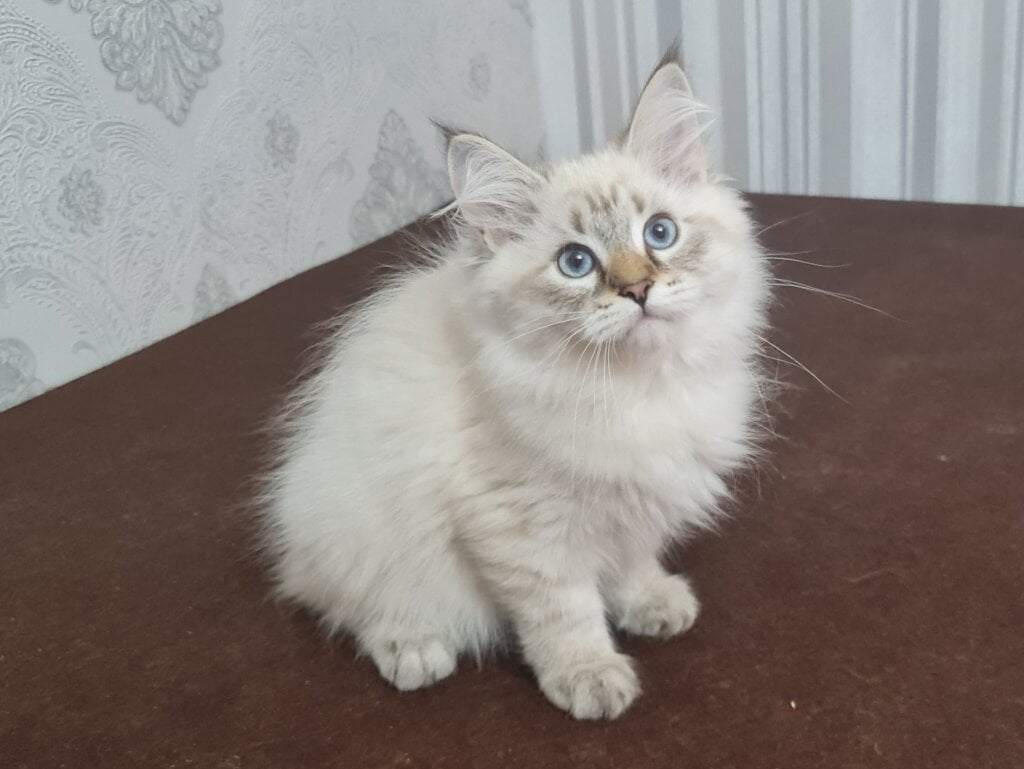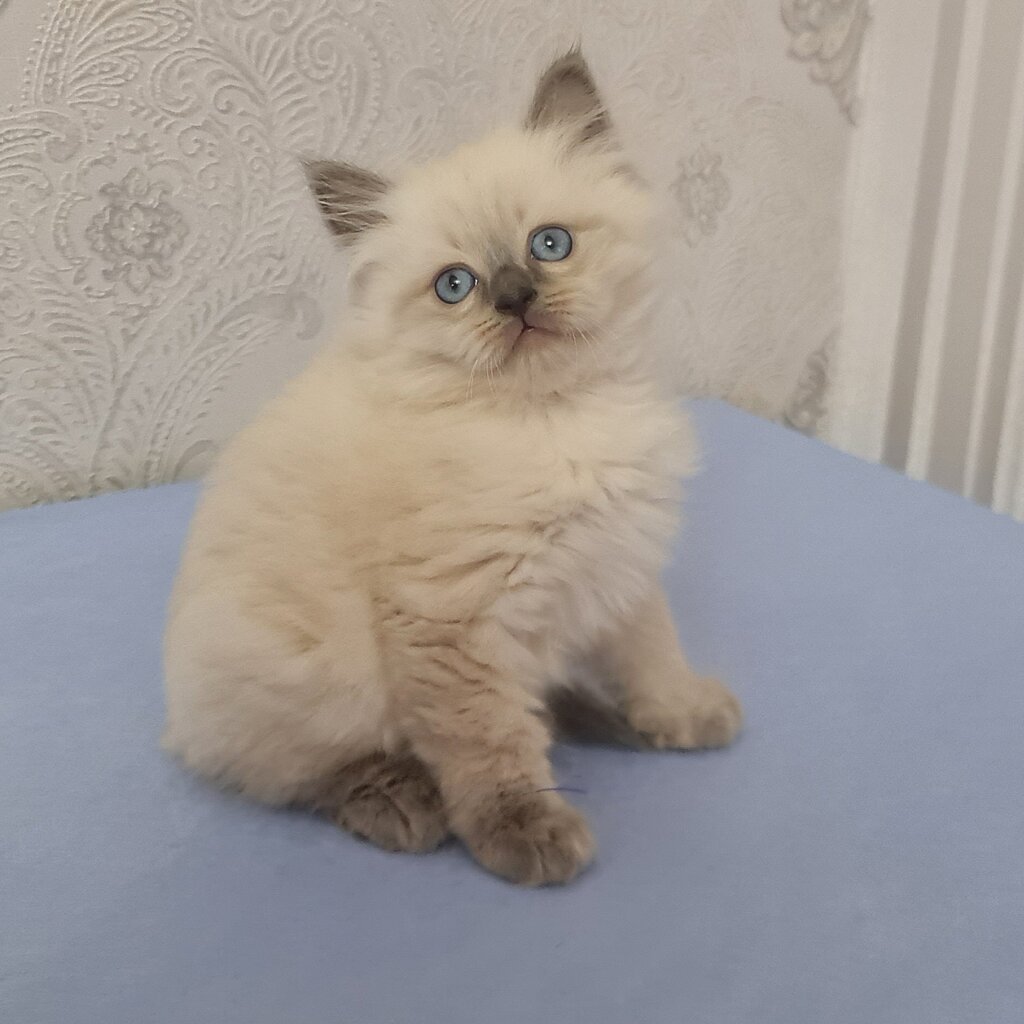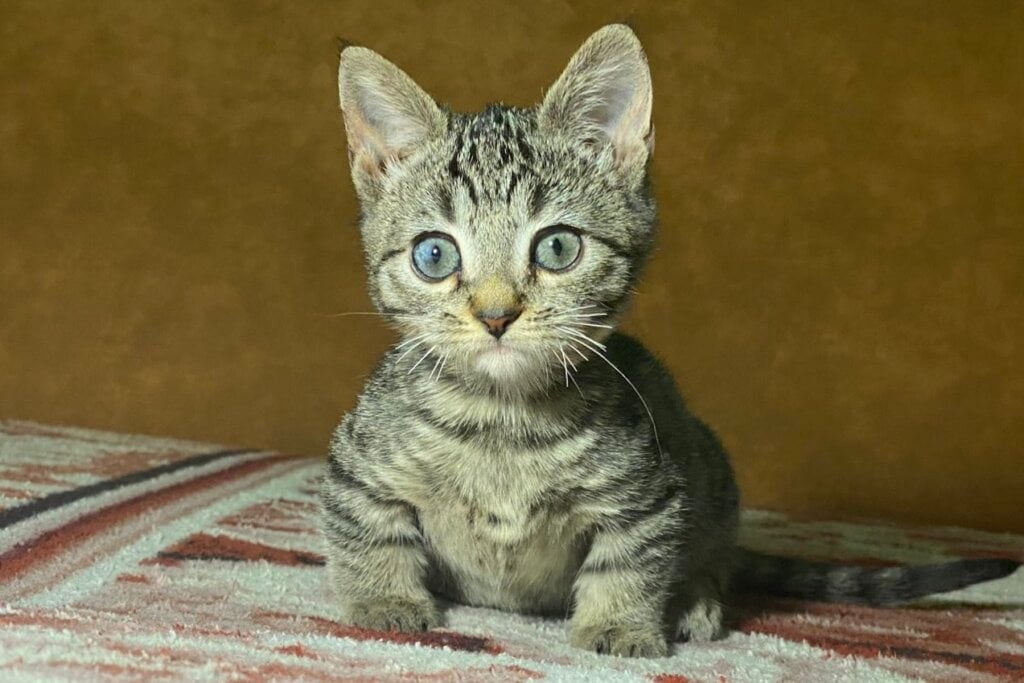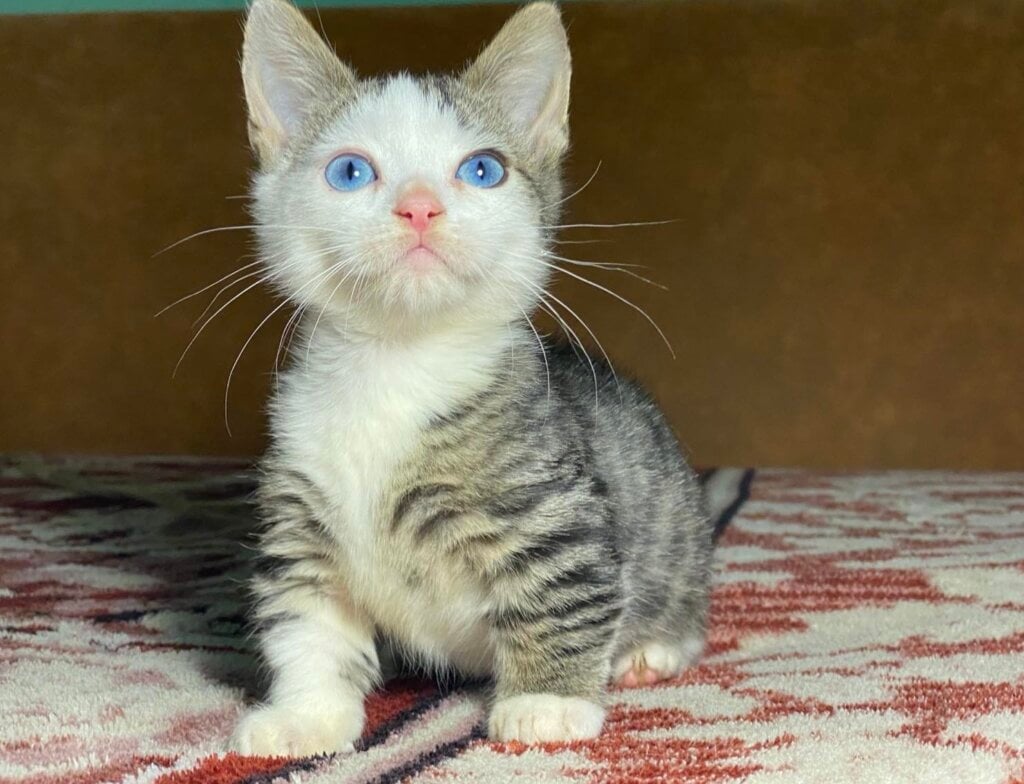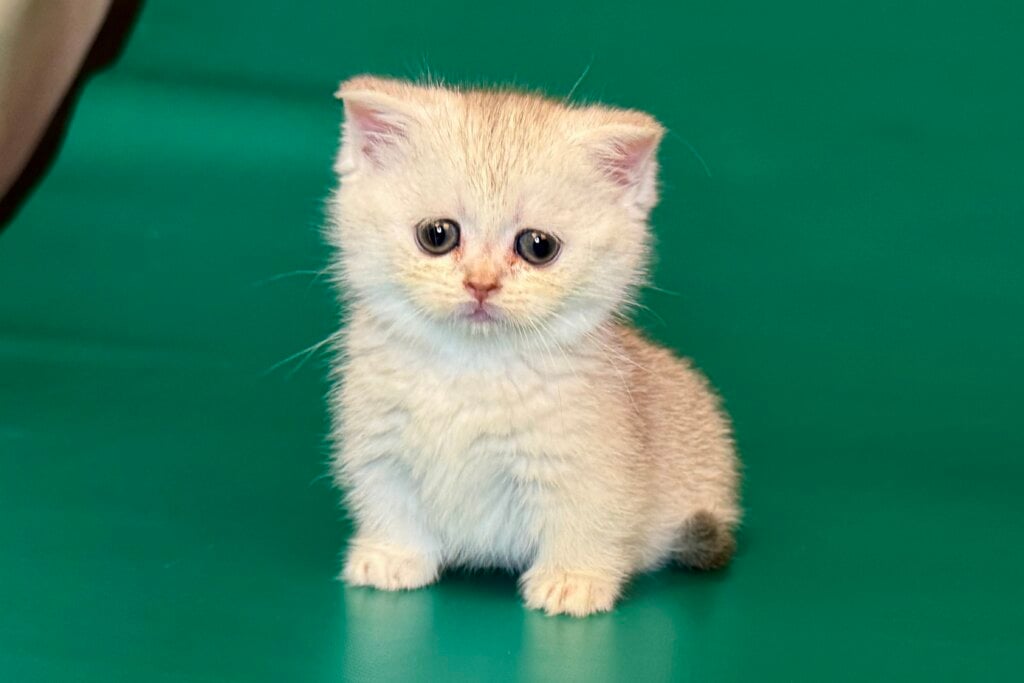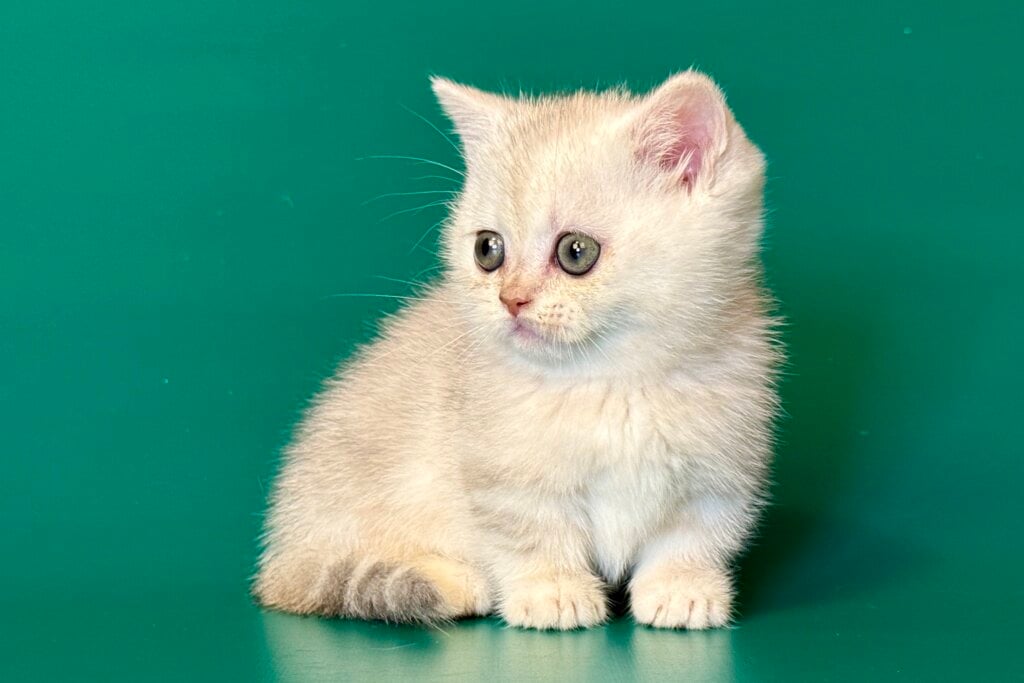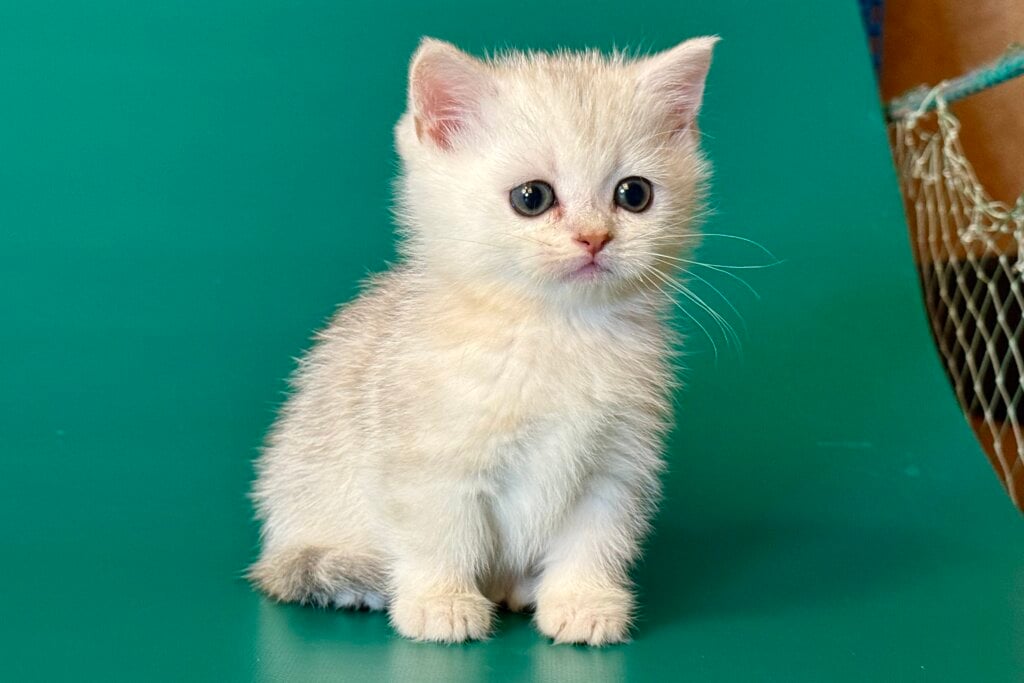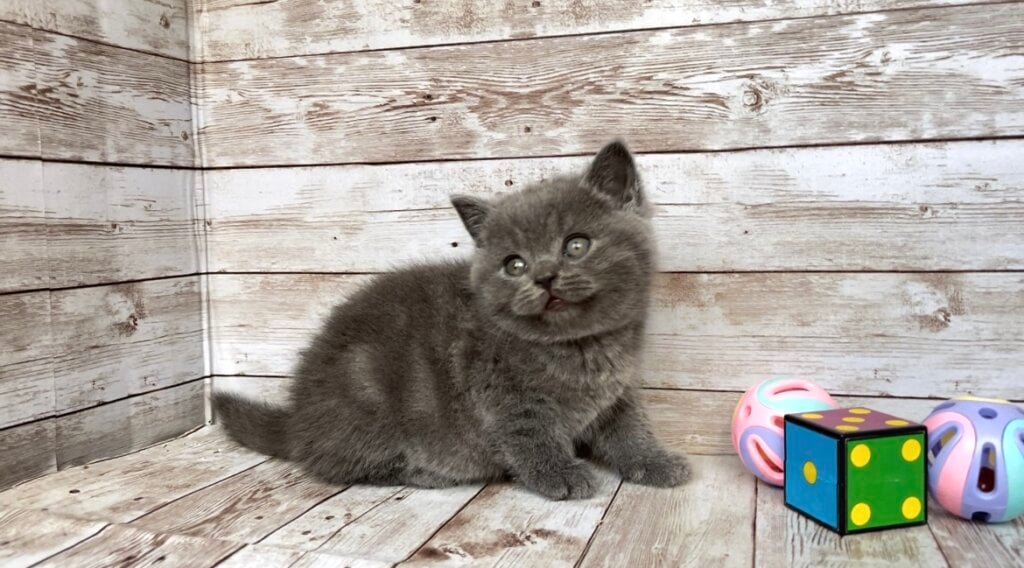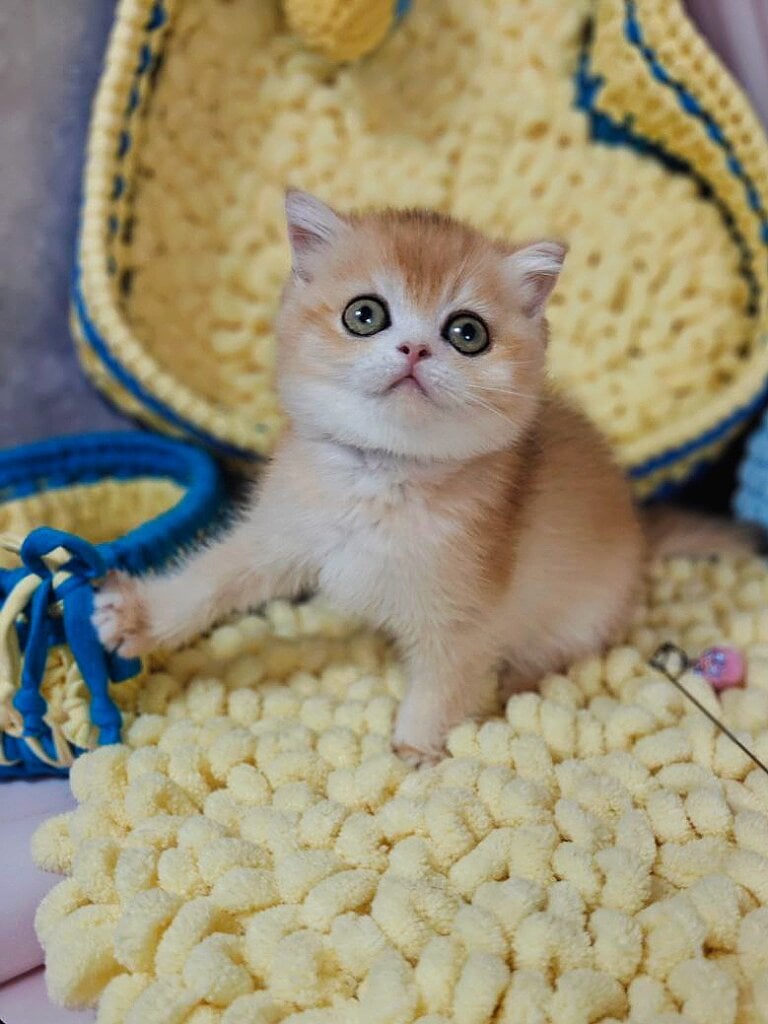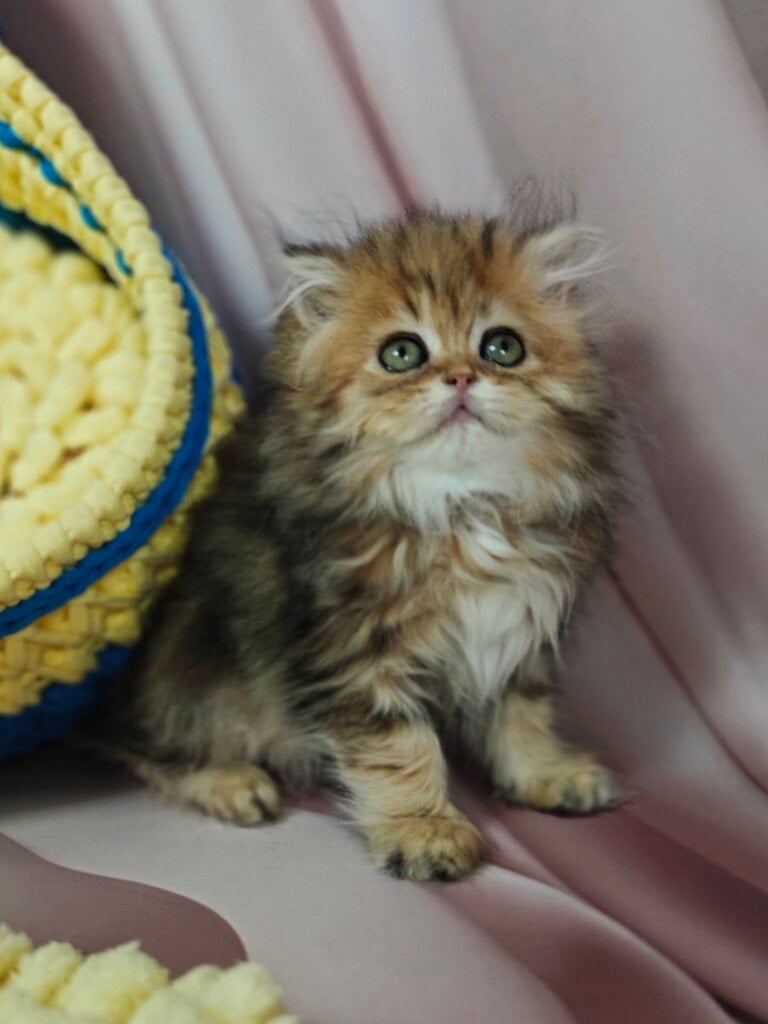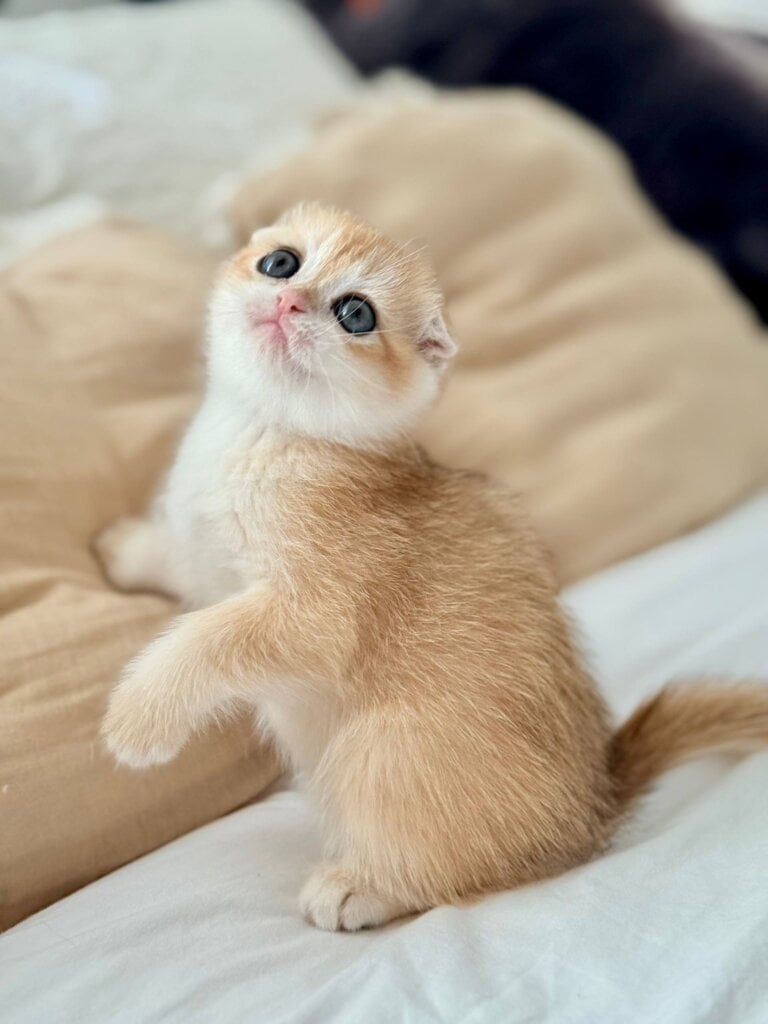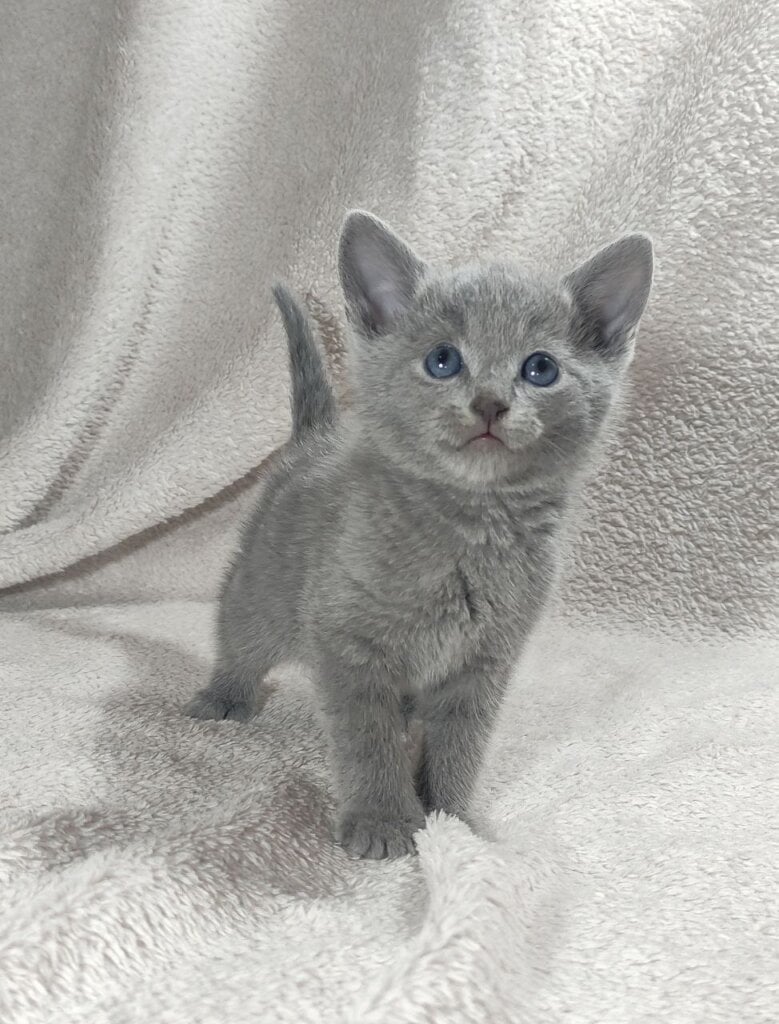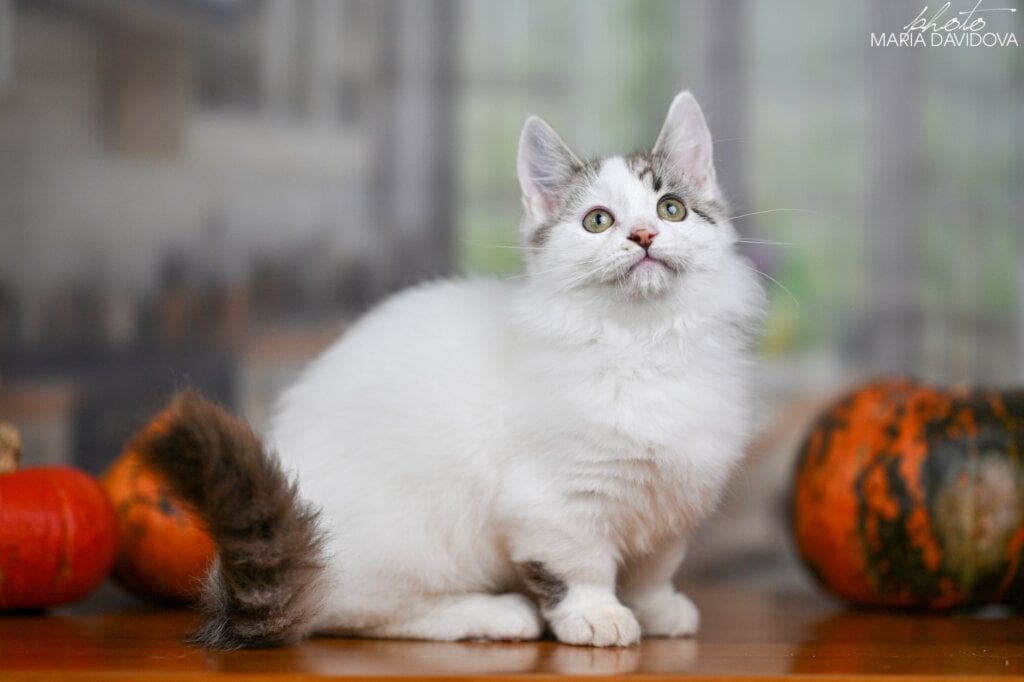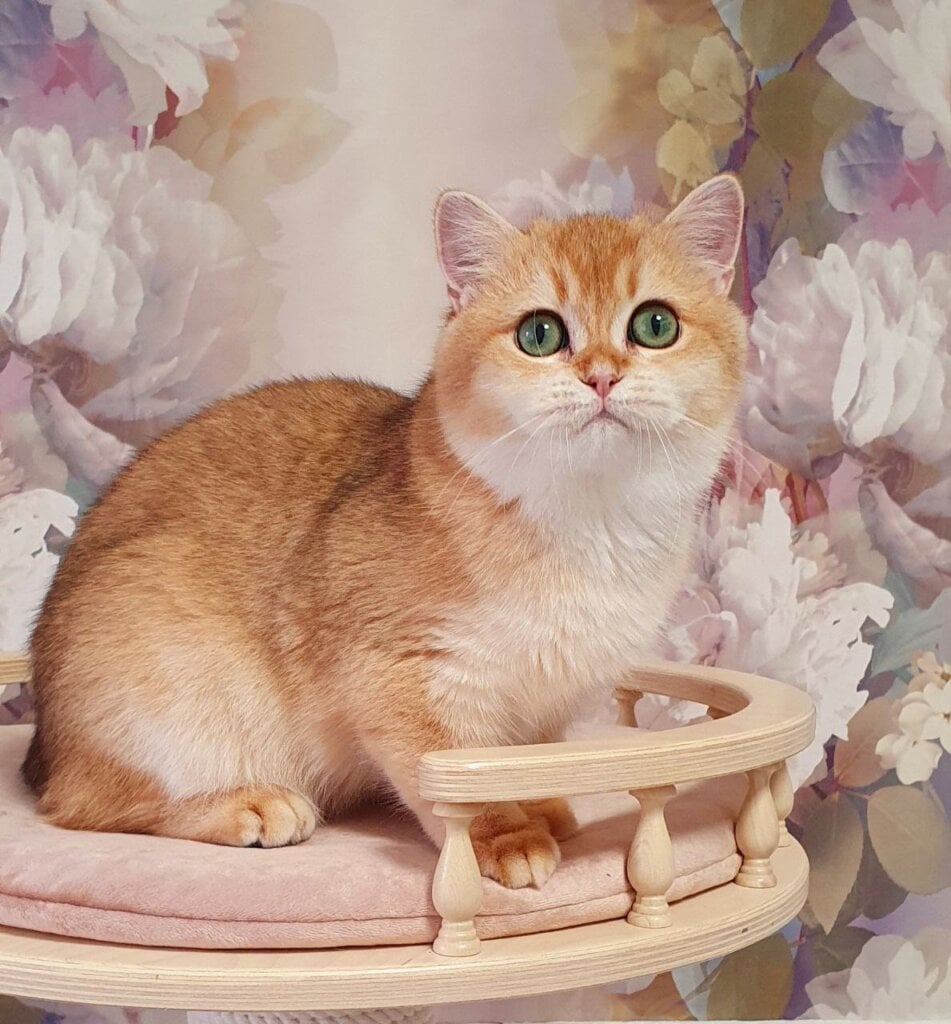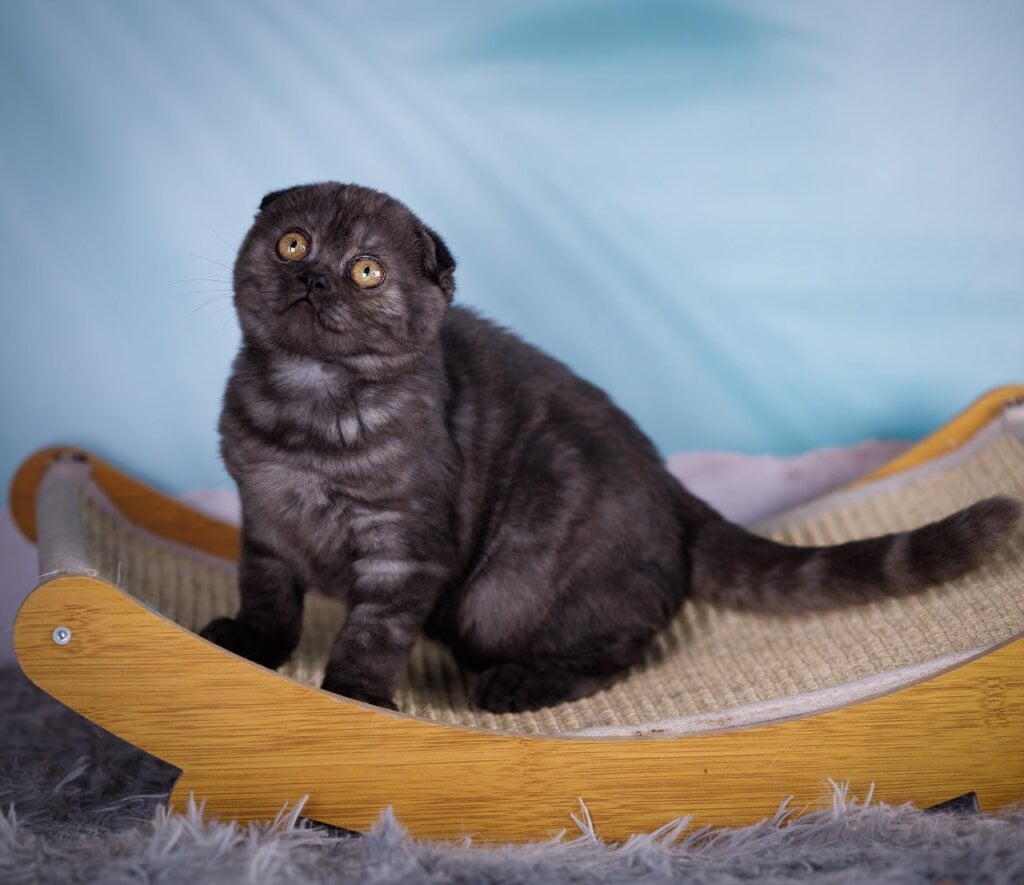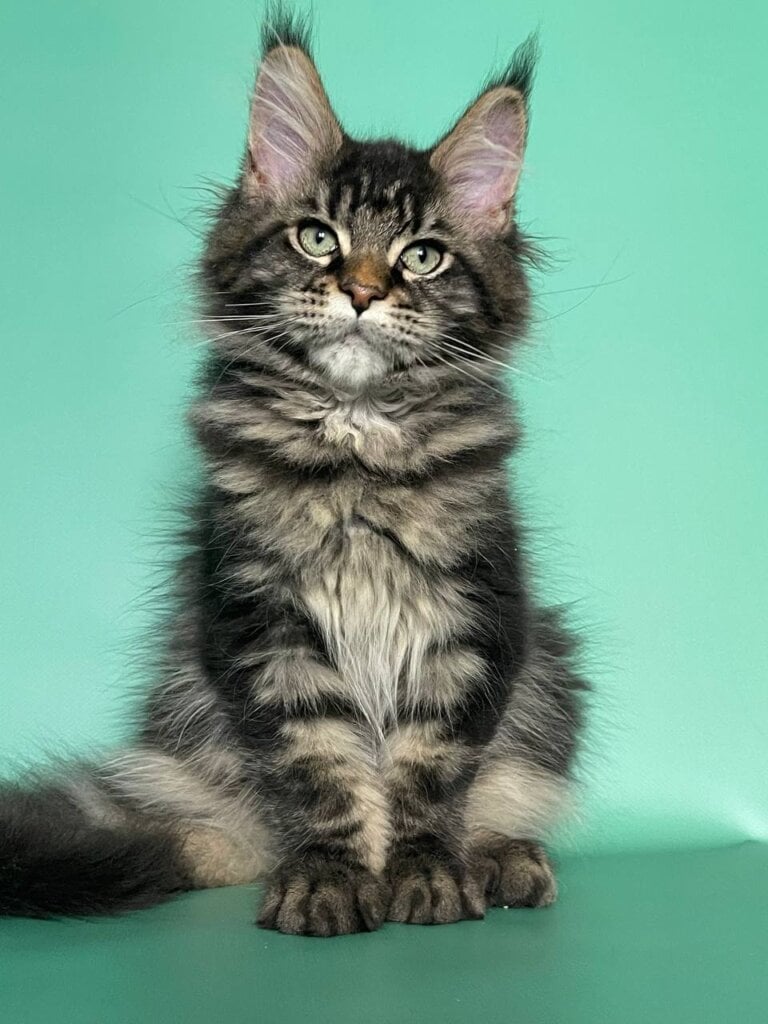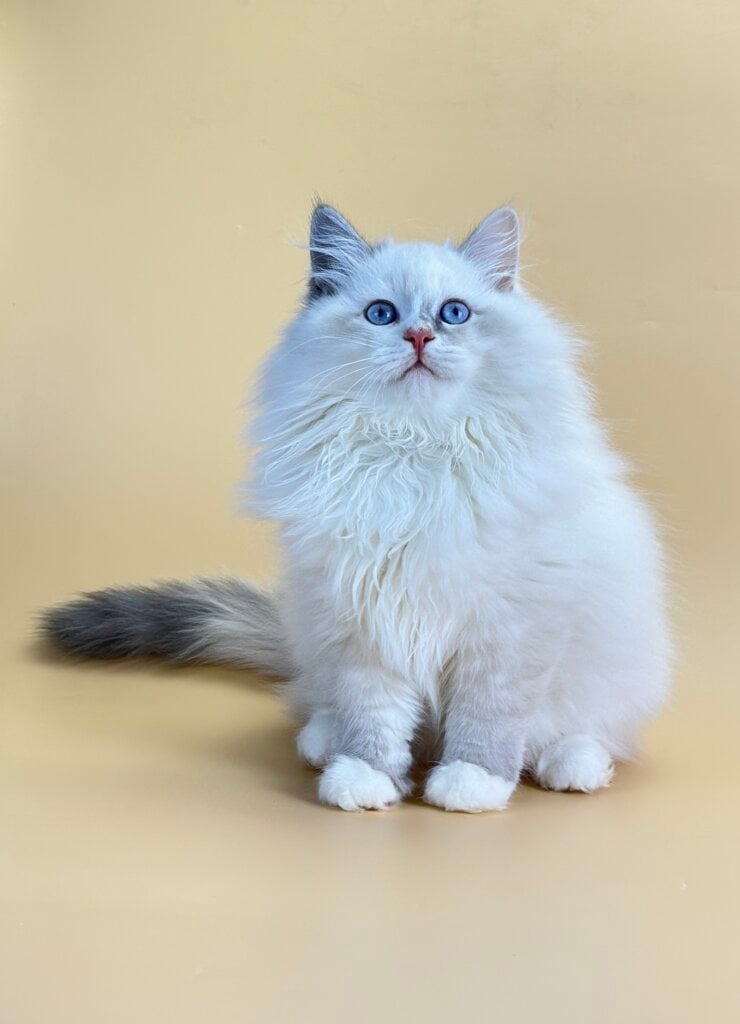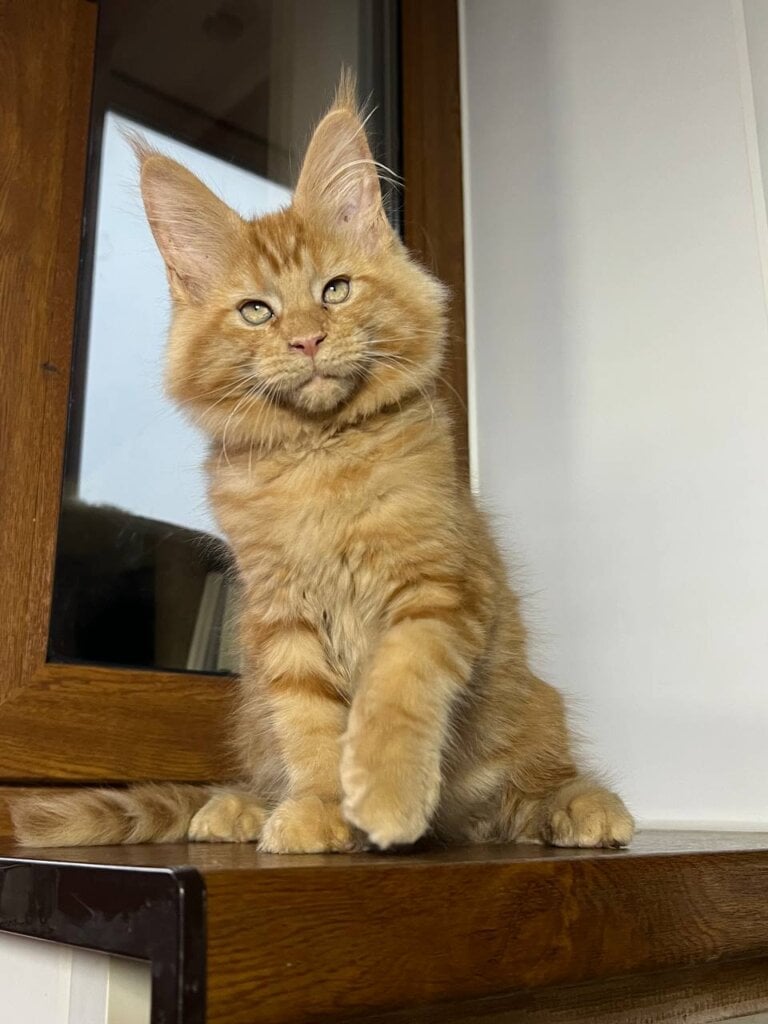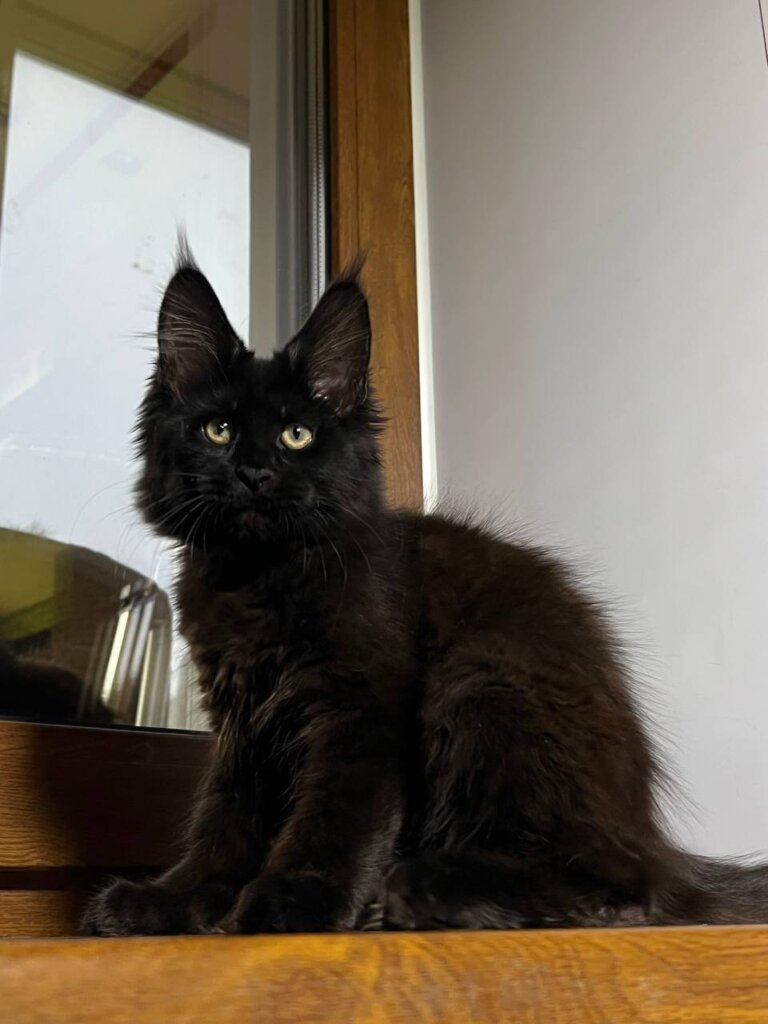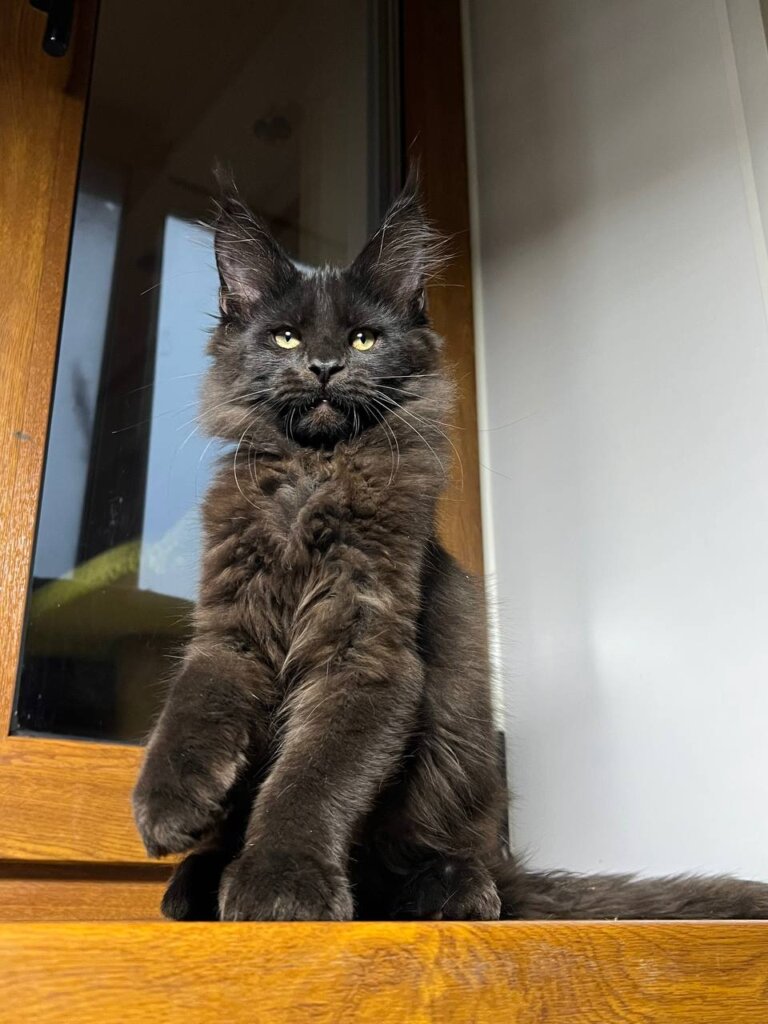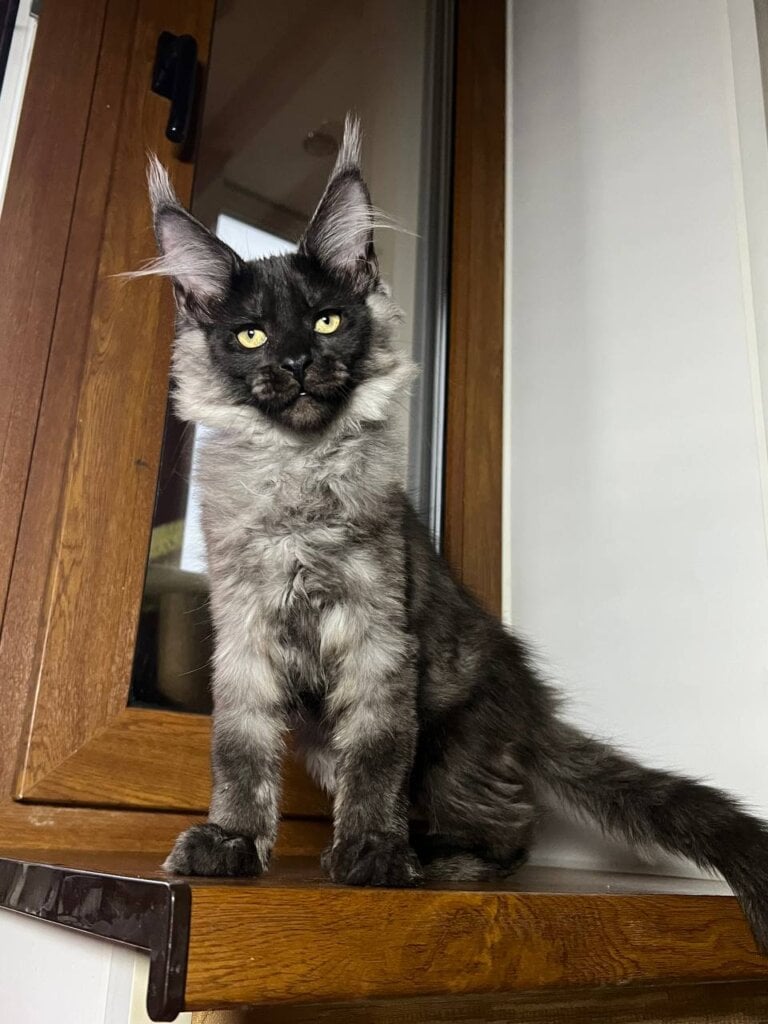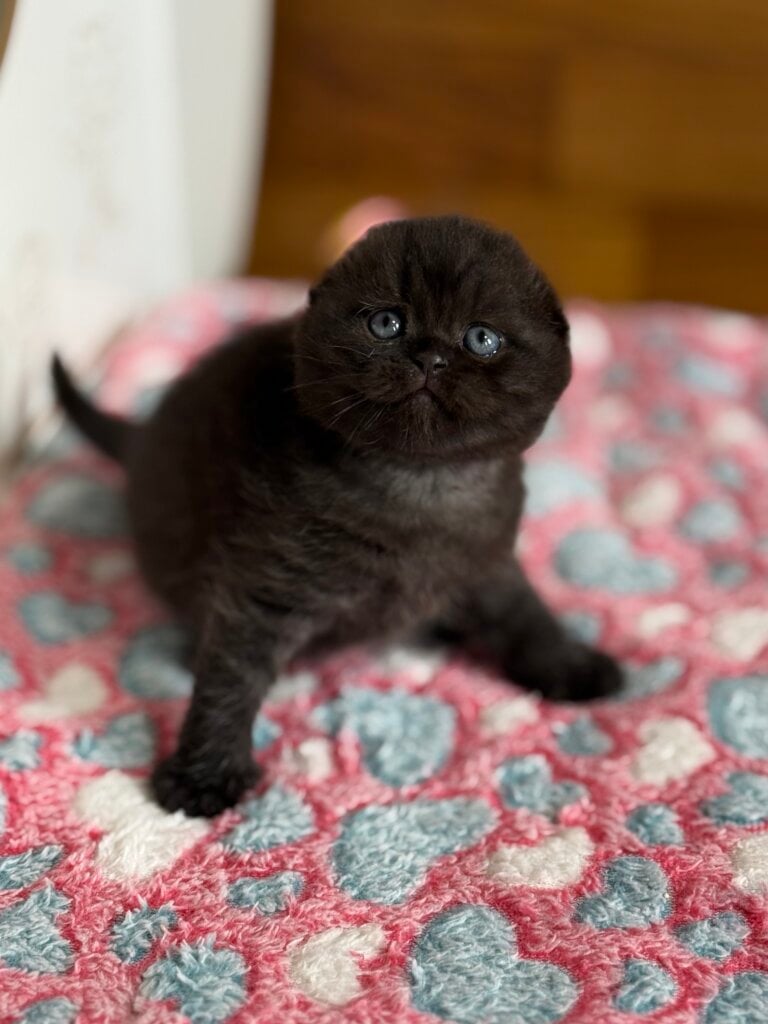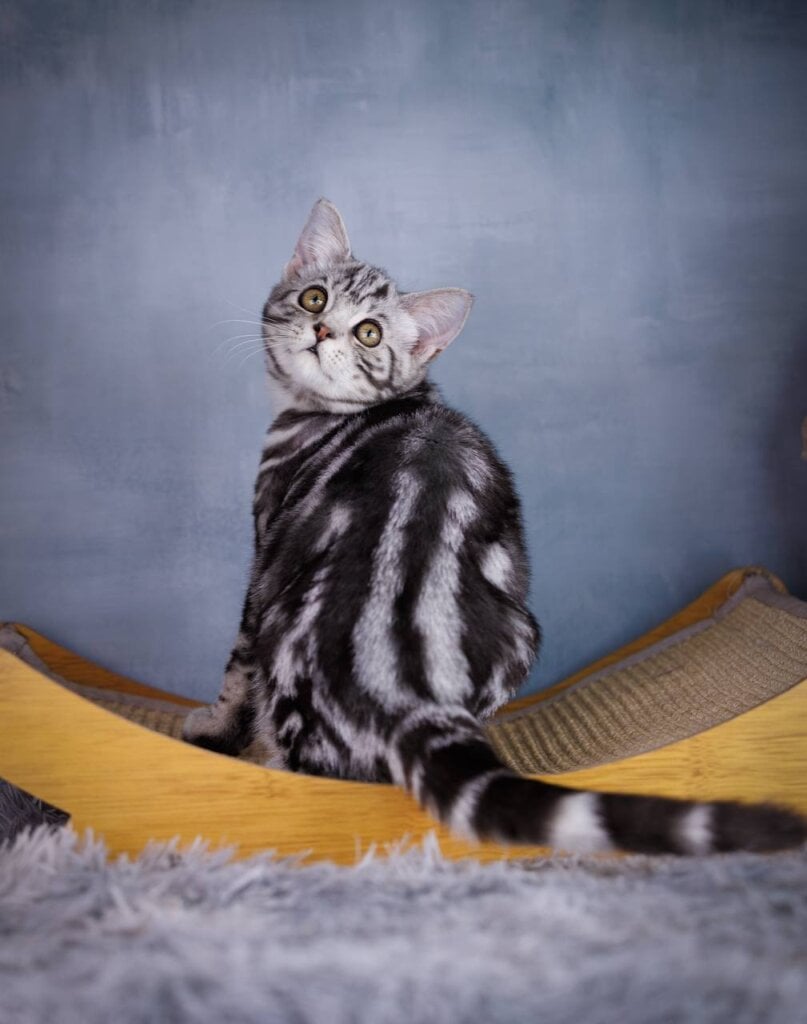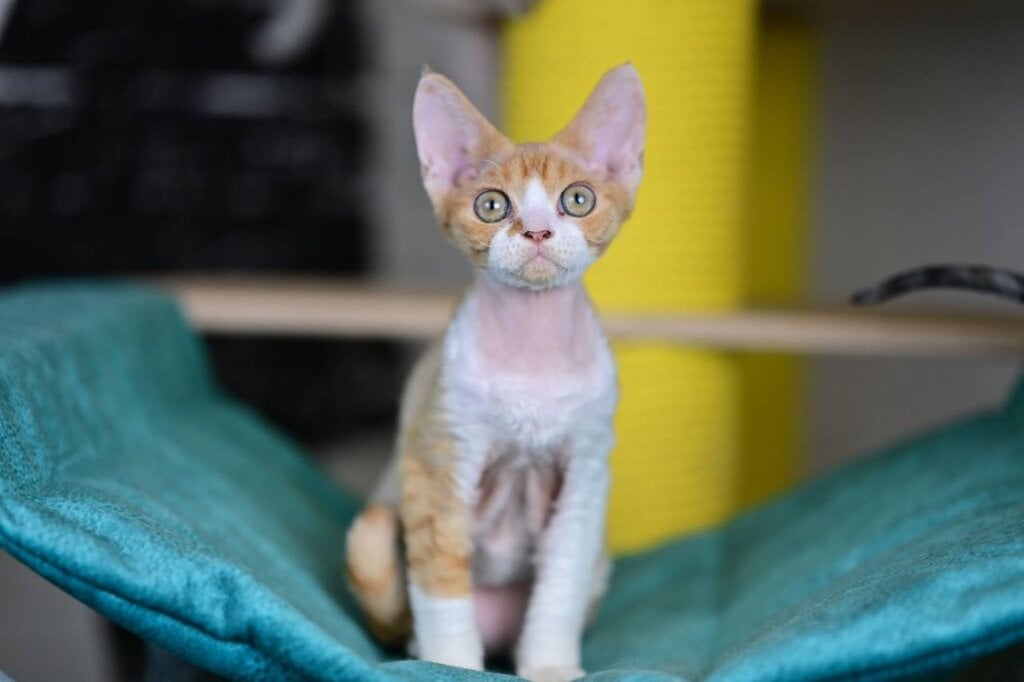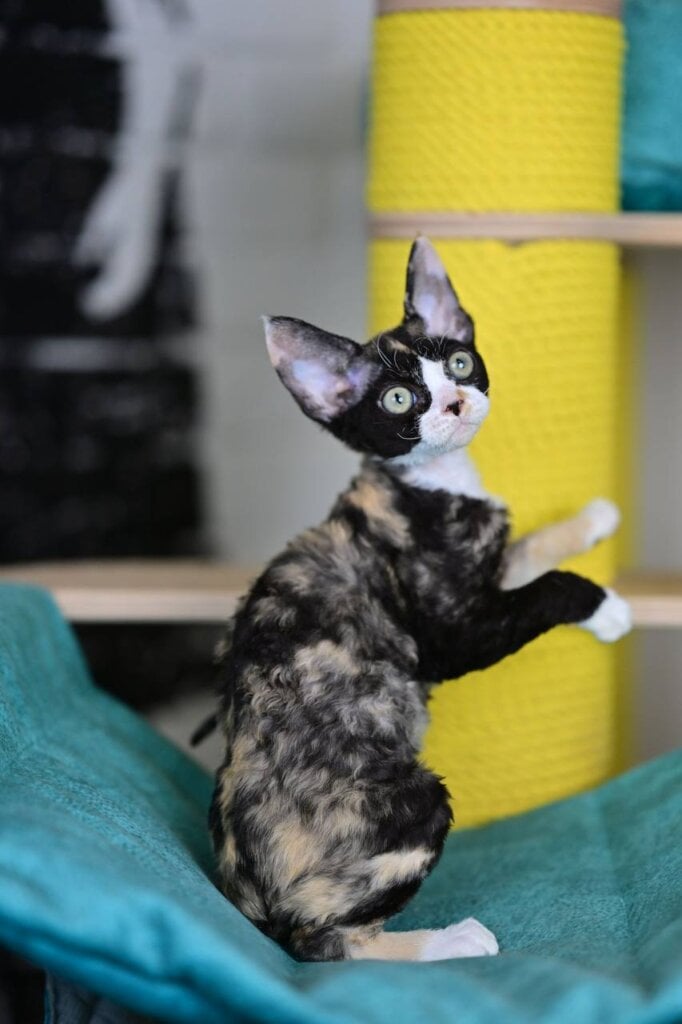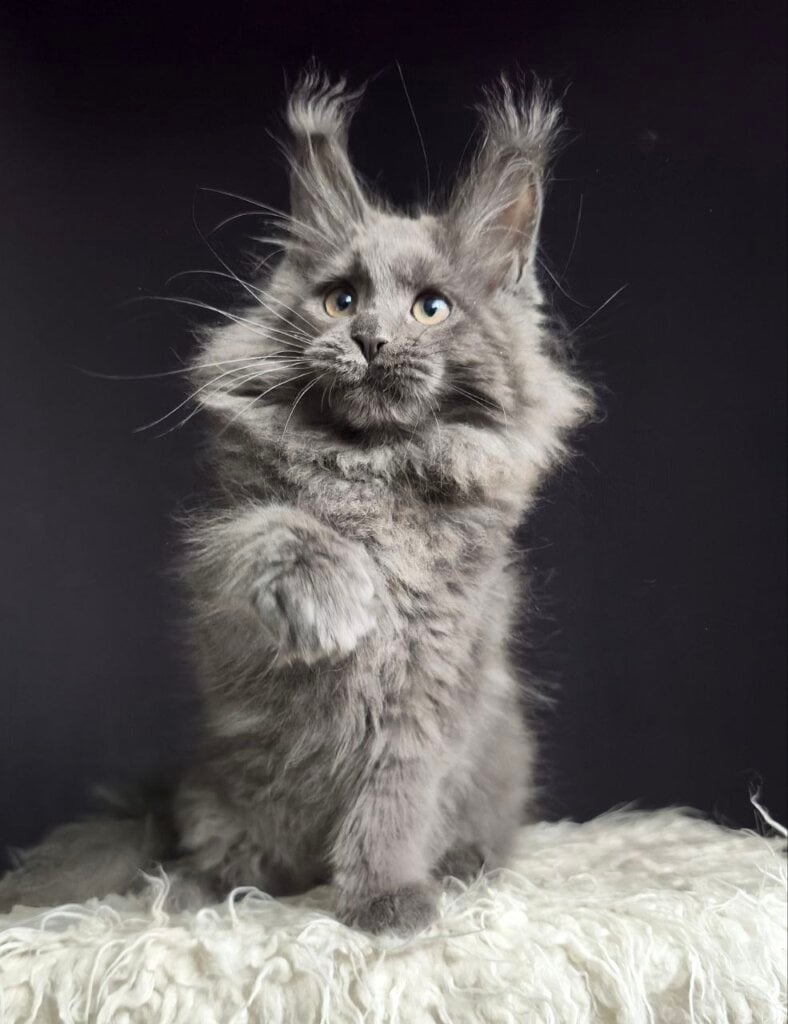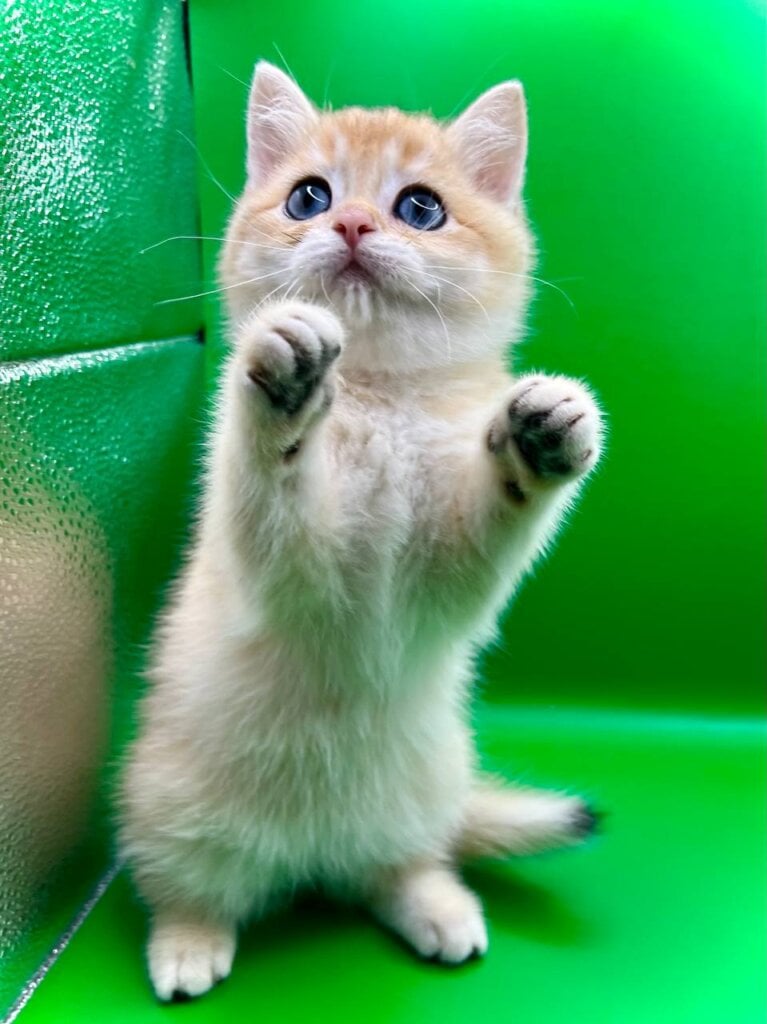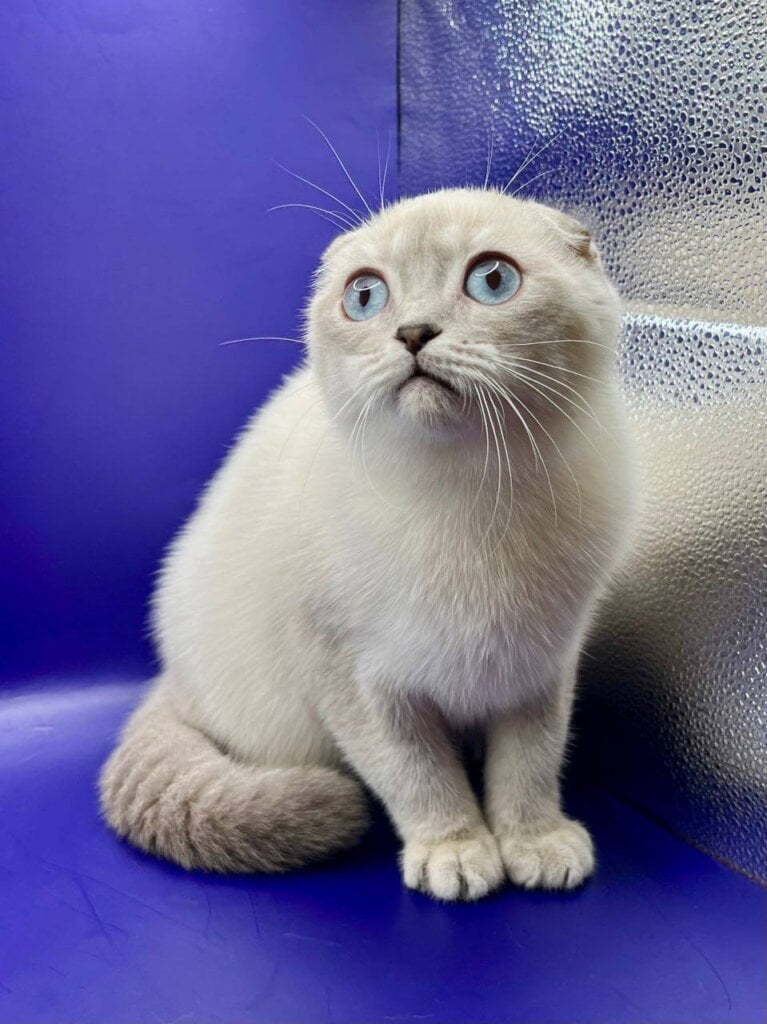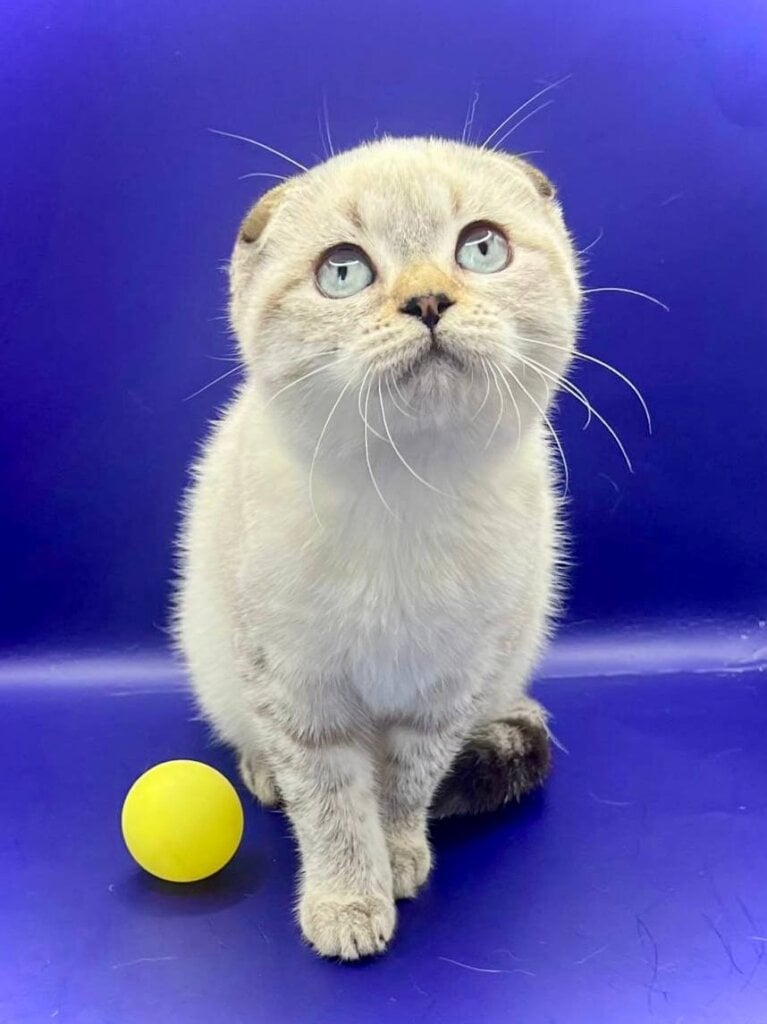So what’s the difference between a Russian Blue and a British Blue cat?
Russian Blues are slender cats with short silver-blue coats and vivid green eyes.
British Blues, or British Shorthairs, appear stockier, with plush blue-gray fur and copper or golden eyes.
Both are excellent pets, but their appearance and temperament differentiate them.
The main body will elaborate on each breed.
The Russian Blue vs British Blue Cat
While both Russian Blue and British Blue cats turn heads with their stunning blue-gray fur, their appearances, physiques and temperaments differ. Knowing these differences can assist families choose the appropriate companion and ensure everyone flourishes together.
1. Body Shape
Russian Blues are slender, airy and elegant. They prowl with a silent, pawing tread, flaunting their lithe form. Their long fine legs and thin tails give them a sort of ‘ballet dancer’ appearance.
British Blues, meanwhile, are way more chunky. Their bodies are compact, broad and low to the floor. This build gives them a teddy bear impression-tubby, chunky, laid back. Their bushy tails and large fuzzy paws complete their rugged appearance.
These differences shape how they move: Russian Blues are quick and light, while British Blues move slow and steady.
| Feature | Russian Blue | British Blue |
|---|---|---|
| Body | Slim, long, light | Stocky, broad, thick |
| Tail | Thin, long | Thick, medium |
| Movement | Agile, fast | Calm, slow |
2. Head and Face
The Russian Blue’s head is wedge-shaped, with high cheekbones and a flat forehead. This form, combined with their large, pointed ears lends them a majestic, sharp appearance. It’s a face that appears ever attentive and centered.
For the British Blue, the face is round with full cheeks and a short nose, making the cat look sweet and approachable. Their smaller, rounder ears sit wide apart, crafting their soft, ‘smiling’ appearance.
These faces influence how we read their moods. Russian Blues appear wise and thoughtful, British Blues warm and friendly.
3. Eye Color
Russian Blues have striking emerald green eyes. This audacious shade is uncommon – one of their most eye-catching attributes. Her emerald tone pops against their silver coat and grabs attention in any room.
Not all Russian Blue cats have eyes that green, but that’s the breeders’ goal. British Blues provide a different fashion. Their eyes are gold or copper – occasionally deep yellow, occasionally more orange.
These warm tones make them feel cozy and soft. Eye color is associated with breed purity and health. Whether they’re scouring for a Russian Blue with perfect green eyes or a British Blue with rich copper shades, both are sought after by connoisseurs of the breed.
4. Coat Texture
Russian Blues have a short, double-coated that’s silky and soft to the touch, with a silvery sheen. Thanks to its double coat, Russian Blues are almost hypoallergenic, as it helps lessen allergens.
They shed less and require less brushing, which is convenient for hectic households. British Blues have a single dense, plush coat. Their fur is denser and velvet to the touch.
This variety requires extra brushing, particularly around shedding season, but is oh-so soothing to snuggle. When selecting a kitten, check for an even coat with no bald spots or rough patches.
5. Color Nuances
Russian Blues range from pale silver-gray to darker slate. Light can render their coats brighter or starker, altering their appearance from day to night.
British Blues cling to a constant blue-gray, always uniform and lush. They’re solid-colored throughout, contributing to their soft, plush appearance.
| Shade | Russian Blue | British Blue |
|---|---|---|
| Lightest | Pale silver-blue | Mid-tone blue-gray |
| Typical | Medium blue with silver tips | Consistent blue-gray |
| Darkest | Deep slate blue | Slightly darker blue-gray |
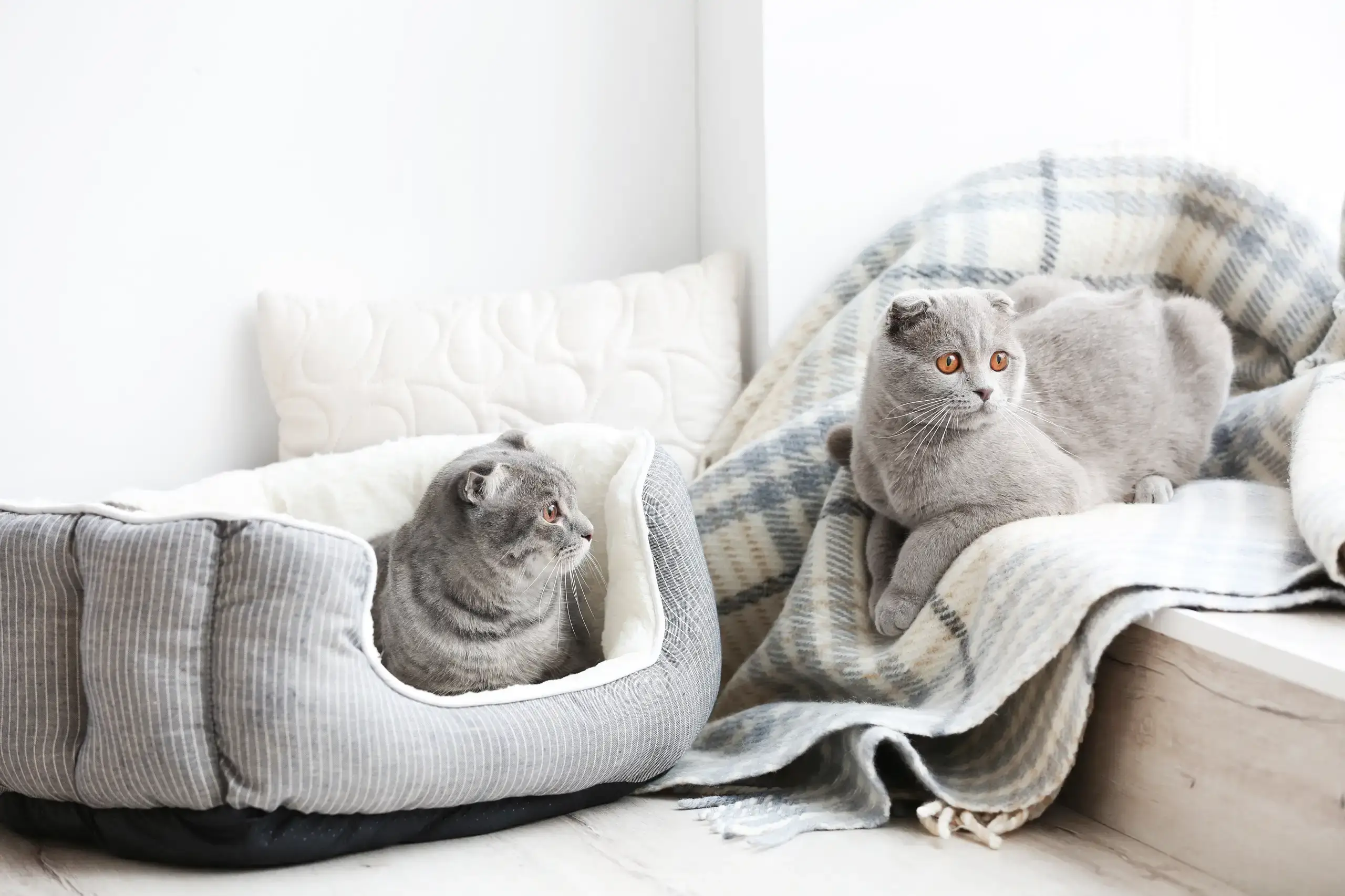
Uncovering Their Personalities
Russian Blue and British Blue cats add their own flair to the household. Russian Blues – astute, mischievous and intensely attached to their humans. British Blues are mellow, laidback and adore some silent snuggle. Understanding these cats’ ways allows families to select the ideal fit and form deep, loving connections.
Social Style
Russian Blues integrate into family life observing, absorbing, and participating when they feel secure. They’re like silent sherpas, trailing their beloved human and trekking into adventure once trust is established. Their INFJ-like mix of quiet time and people-watching means they slowly gravitate warm to guests, but never let go of their tight family bond.
British Blues are known for their mild, easy-going natures. They’ll fit in with kids, other pets and even hectic households. These cats will typically select a preferred location and observe the activity, stopping in for nuzzles or a short snooze on a lap. They hardly ever get stressed when new people come around, which makes them cool in social situations.
Both breeds have a manner with strangers. Russian Blues may hold their affection back and will only express it to those that they know. British Blues are all love, and will frequently welcome visitors with slow blinks or a meow. A Russian Blue might cower in hiding initially, but will tentatively look out if a trusted human is around.
British Blues, indeed, may deign to come wandering over for a sniff or lay down in close proximity, observing with unblinking gaze.
Affection Level
Russian Blues express affection with play and companionship. They enjoy batting at toys, chasing strings and need their human right there with them. This breed might even hang out by the door or trail owners from room to room, never wanting to be apart.
British Blues are slow to warm, but once they form a connection, their affection is strong. They might not dart after toys as much, but their gentle purr and peaceful presence demonstrate their allegiance. Owners can always find a British Blue curled up next to them, purring for some loving strokes.
A Russian Blue may demand increased play and mental stimulation, whereas a British Blue is satisfied with uncomplicated petting and gentle words. To assist both breeds display their best side, have toys available for the Russian Blue and provide regular, tender care for the British Blue.
Intelligence
Russian Blues are noted for their smartness. They enjoy puzzles, fetch and mind games. If you pose them a challenge, they’ll surprise their owners by figuring out how to solve it.
British Blues are clever as well. They embrace innovation but at a more languid pace. Simple games, treat balls, or learning tricks at their own pace suit them well. While both breeds can be trained to follow commands, Russian Blues yearn for more intellectual labor.
Here are some ways to keep both breeds sharp:
- Hide treats in puzzle toys for the Russian Blue
- Teach simple commands, like sit or high five
- Use feather wands or string toys for short games
- Rotate toys to keep both breeds interested
Living With The Breeds
While Russian Blue and British Blue cats provide distinct joys as companions, their daily requirements-and optimal means to stimulate their lives-diverge in crucial respects. Better to make your home and lifestyle match theirs and help everyone thrive.
Energy and Play
Russian Blues are energetic, inquisitive and adore stalking moving toys. They require innovative play to keep them clever, from feather wands to puzzle feeders. This breed seeks an owner who wants to play – every day.
British Blues, on the other hand, bring a soothing calm. They may paw at a ball or track a lazily waving string, but they relish naps and tranquility.
- Begin every morning with fifteen minutes of play for a Russian Blue-shake things up with a variety of toys.
- Let British Blues have soft games their way, then a snuggly corner to crash.
- Keep a Russian Blue’s mind moving with interactive toys.
- After play, establish calm time for both felines to decompress.
Family Dynamics
Russian Blues bond well with kids, sliding right into family activities. They are attention-seeking, engagement-thriving dogs and excellent for homes with kids who desire an engaged dog.
British Blues are patient and acclimate to noise or unexpected change, so they fit smoothly into homes that may be expecting a new baby or furry addition.
Russian Blues take a little while to adjust if the family expands, but with attention, they find their footing. With a new cat, provide both breeds slow, safe introductions-a separate room, scent-swapping and short, supervised meetings.
Home Environment
Russian Blues require situations that stimulate their mind. Throw in some cat trees, puzzle toys and window perches to keep them happy. If bored or neglected, they can become anxious or depressed.
British Blues do well in small spaces and will adjust to apartments or houses. Like most breeds, both breeds thrive with safe zones-i.e. A cat bed in a quiet corner-where they can decompress.
Russian Blues alter toys frequently to prevent boredom. For British Blues, a consistent schedule and soft petting make them feel safe and cherished.
A Look at Their Origins
Russian Blue and British Blue cats originate from vastly different origins and histories, however each has made an impact in their native lands. The Russian Blue originated in the chilly, northern ports of Russia. Most think the breed originally came to be in Arkhangelsk, a port city, and sported a short, dense blue-grey coat.
Russian Blues were like jewels in Russia. Due to their placid disposition and gentle spirit, royalty and czars often kept them as pets. In the late 1800s, traders took these cats to the rest of Europe where they attracted the attention of cat lovers looking for something exotic and chic. The breed’s roots in Russian culture run deep, and even now, many in Russia view them as a sign of elegance and fortune.
The British Blue, better known as the British Shorthair, has its own lengthy story to tell. This breed goes back to the UK. Its origin tale begins with ancient house cats probably introduced by the Romans, who colonized Britain many hundreds of years ago.
Over time, these cats interbred and adjusted to the British Isles, becoming sturdy, broad-faced characteristics that assisted them in battling the wet, frigid weather. The British Shorthair took hold in British homes, valued for their affectionate but reserved demeanor and their velvety blue coats.
In World War II, the British Shorthair’s numbers fell to such an extent that breeders had to inter-breed them with other breeds, including the Russian Blue, to sustain the breed. This combination influenced the design and aesthetic of the British Blue we observe now.
Each breed served vital roles in their native lands. In Russia, the Russian Blue is considered a symbol of peace and prosperity. In Britain, the British Shorthair is considered the quintessential “British cat” – solid, placid and dependable.
Every breed’s tale mirrors the culture and values of their lands, influencing how we view and treat these felines. Below is a table showing the historical background and cultural meaning of each:
| Breed | Region of Origin | Historical Background | Cultural Significance |
|---|---|---|---|
| Russian Blue | Northern Russia | Favored by czars, exported in 19th century, known for blue-gray coat | Symbol of grace and good luck in Russia |
| British Shorthair | United Kingdom | Roots from Roman times, almost extinct in WWII, saved by crossbreeding | Iconic British pet, symbol of stability |
Both breeds reflect the impact of generations of selective breeding. Breeders in both nations strove to maintain and enhance the characteristics that made each breed unique-be it the Russian Blue’s silky coat and shy allure, or the British Shorthair’s robust physique and placid temperament.
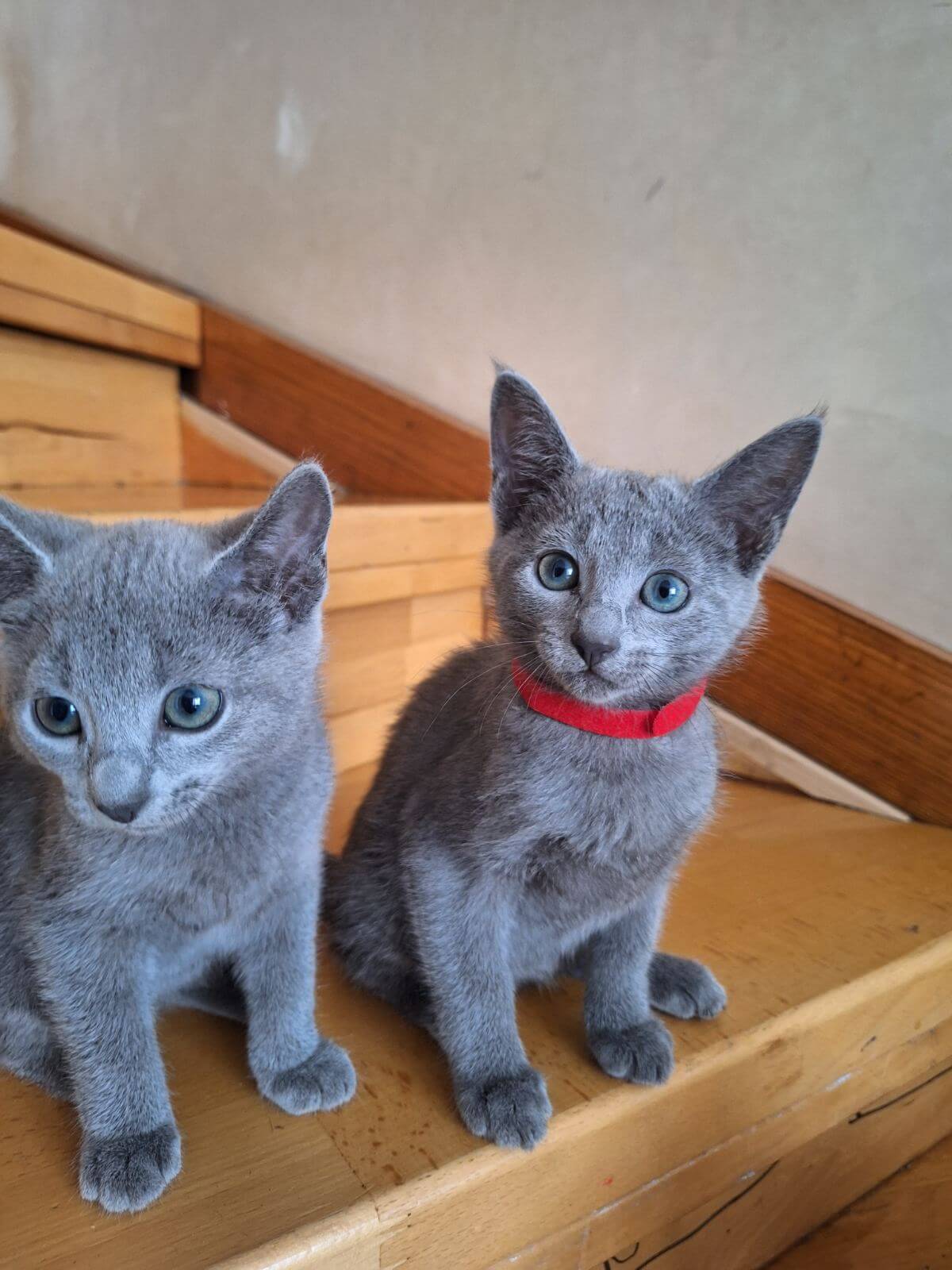
Daily Care and Grooming
Russian Blue and British Blue cats both sport plush, double-layered coats that appear striking and are soft to the touch. While both breeds share some care basics, there are key differences in how you keep their coats healthy and manage their daily needs. Their coats vary from rich, charcoal grey to gentle, silvery shades. However, their grooming and care regimens don’t look identical.
Coat Maintenance
Russian Blues are renowned for their short, dense and silvery coats that virtually never matt. These cats require just a weekly brushing to maintain their prime condition. Their fur is super dense, but it’s so fine and even that you hardly ever see tangles. They’re a safe choice for allergy-prone families–Russian Blues shed less of the Fel d 1 protein, so they’re less apt to cause reactions.
British Blue cats possess a plush, dense coat that feels almost velvety. Though their coat is short, it’s a little longer and thicker than the Russian Blue’s. Weekly brushing isn’t always sufficient-most British Blue cats require brushing a minimum of twice per week. If you miss a session, tangles and mats appear quickly, particularly around their neck and legs.
Opt for a slicker brush or a wide-tooth comb for British Blues, and a soft-bristle brush for Russian Blues. Routine grooming aids in detecting initial skin issues, reduces shedding, and gives you the opportunity to monitor for any cuts or bruises.
Nutritional Needs
Russian Blues are trim, athletic cats that require a protein-rich diet to maintain their vigor and physique. Lean meats and fish are best, as they provide the proper combination of protein, vitamins and minerals. British Blue cats, on the other hand, adore their food and can get pudgy if you’re not attentive. They require a balanced, high-protein and lower-fat diet to remain fit.
Russian Blues do well with meal times and smaller portion sizes to suit their lean physique. British Blues require rationed feeds and less treats to avoid weight gain. When selecting cat food, choose one that identifies actual meat or fish as the primary ingredient. Skip the fillers and keep an eye on the calories.
Both breeds do well with clean water – so keep bowls fresh and full.
Daily Care Checklist
- Brush coat (Russian Blue: 1x/week; British Blue: 2-3x/week)
- Check and clean ears as needed
- Clip nails every 2-3 weeks
- Wipe eyes gently with a damp cloth
- Feed high-protein meals at set times
- Refresh water bowls daily
- Clean litter box every day
Beyond the Blue Coat
Russian Blues and British Blues have a shared past, but they are very unique in their vocalizations, temperament and the aura they bring into a household. Both adored for their lush blue coats, but their characters and eccentricities craft completely unique living environments.
Vocal Differences
Russian Blues are notoriously silent. Most days, you most likely will only hear a meek meow or a slight chirp from these cats. They often talk to us in body language, like a slow blink, or a gentle nudge. Russian Blue owners love to mention that their cats would rather observe and listen than serenade a room.
A normal Russian Blue may trill softly if it desires attention or food, but these are few and far between.
British Blues don’t hold back. Therefore, these cats are frequently meowing or purring very vocally to seek your attention, particularly at mealtimes or when they want to play. Their spectrum of sounds is extensive-brief “mews” for a hello, more guttural meows for feeding, and extended purrs in satisfaction.
It’s this ‘voice’ that forges a more dynamic interface, and one reason why life with a British Blue is rarely quiet or lonely. These breed-specific communication variances might influence how owners connect with their dogs. For a quiet, low-noise enthusiast, the Russian Blue fits the bill. If you like a cat that ‘talks back’ and is always in the discussion, then the British Blue may be for you.
Behavioral Quirks
Russian Blue cats are inquisitive and intelligent. They adore adventuring, pursuing mini playthings and navigating new areas. Thanks to their mischievous nature, you will frequently find them bolting behind pieces of furniture or jumping onto countertops.
Though they’re energetic, Russian Blues appreciate calm moments and will frequently disappear to a secret nook for a nap. Training Russian Blues is best done with positive reinforcement-small rewards and soft encouragement are very effective.
By contrast, the British Blue is the king of leisure. These cats would much rather be laid out in a sunbeam or snuggled into the fluffiest chair. They love play, but in quick little jolts, and are most content when free to laze around.
English Blues, on the other hand, respond beautifully to soft coaxing and rigid schedules. They flourish with your honor of their serenity, so they’re laid-back buddies for families or anyone craving a chill canine.
The “Vibe”
A Russian Blue’s presence adds a spark of life and a bit of whimsy to a household. Their monkey business and inquisitiveness keep things spicy. They bond with their families but they aren’t clingy, and are giving of everyone’s space.
This mix of love and autonomy keeps the household well-balanced. BRITISH BLUES ARE COMFORT. Their even-keeled disposition brings a peaceful, comforting air. They go a long way towards establishing a laid back tempo at home, ideal for decompressing after a hectic day.
Their gregarious, tolerant nature endears them to both children and adults. Having one or the other type can change the vibe of a household in different fashions. Russian Blues add a spark while British Blues form a soothing, cozy atmosphere.
On the flip side of supporting these vibes – establish comfy nap stations for British Blues and store engaging playthings for Russian Blues within arm’s reach.
Quick Facts
Russian Blues are tinier and leaner than British Blues. Their eyes become sparkling green at 6 months. They cast less allergen, therefore are virtually hypoallergenic. Russian Blues are robust, genetically-stable cats.


